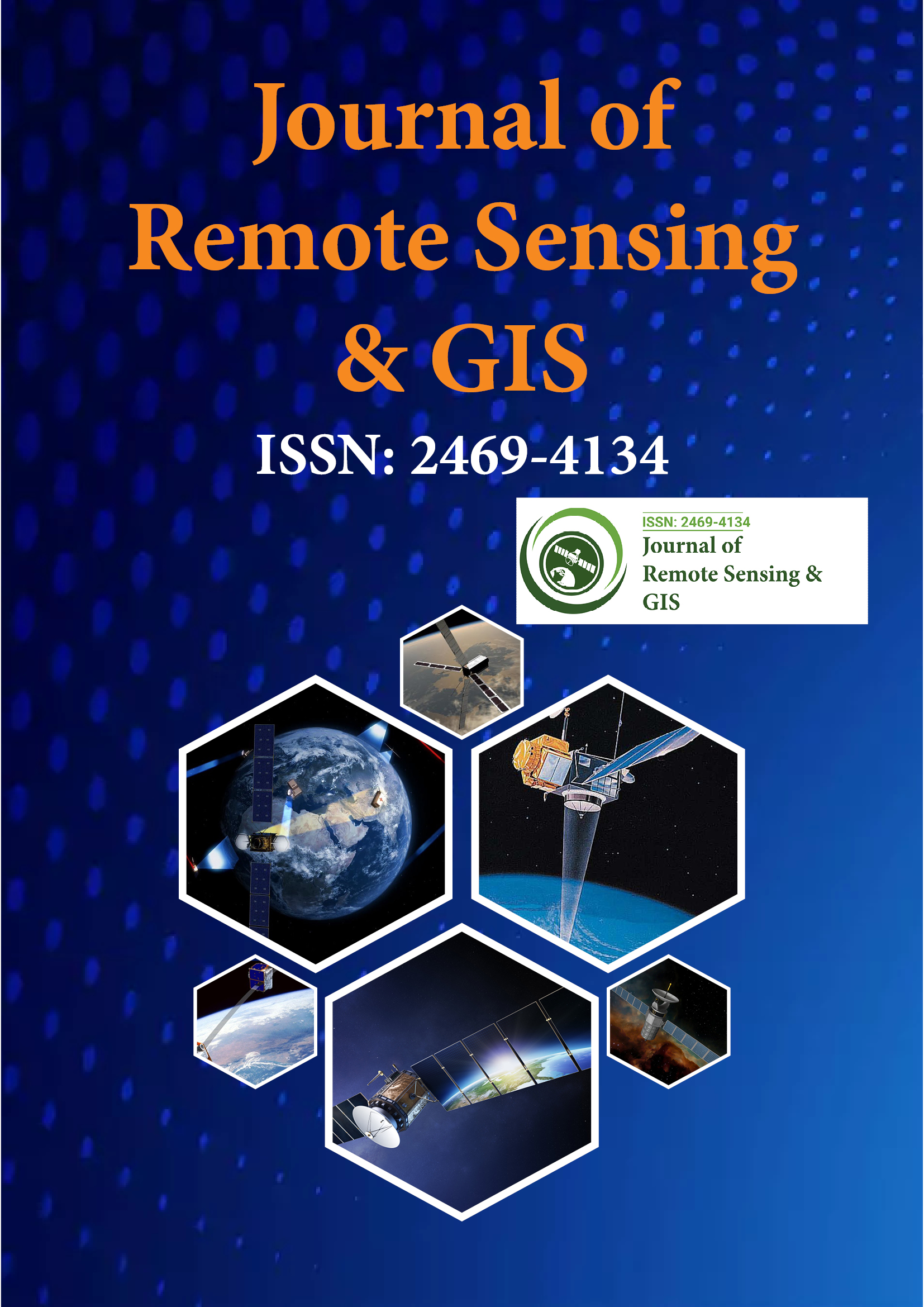Indexed In
- Open J Gate
- RefSeek
- Hamdard University
- EBSCO A-Z
- OCLC- WorldCat
- Publons
- International Scientific Indexing
- Euro Pub
- Google Scholar
Useful Links
Share This Page
Journal Flyer

Open Access Journals
- Agri and Aquaculture
- Biochemistry
- Bioinformatics & Systems Biology
- Business & Management
- Chemistry
- Clinical Sciences
- Engineering
- Food & Nutrition
- General Science
- Genetics & Molecular Biology
- Immunology & Microbiology
- Medical Sciences
- Neuroscience & Psychology
- Nursing & Health Care
- Pharmaceutical Sciences
Commentary - (2025) Volume 14, Issue 3
Geovisualization as a Tool for Data-Driven Decision Support: Exploring Spatial Patterns and Temporal Dynamics
Isabella Reynolds*Received: 29-Aug-2025, Manuscript No. JGRS-25-30283; Editor assigned: 01-Sep-2025, Pre QC No. JGRS-25-30283 (PQ); Reviewed: 15-Sep-2025, QC No. JGRS-25-30283; Revised: 22-Sep-2025, Manuscript No. JGRS-25-30283 (R); Published: 30-Sep-2025, DOI: 10.35248/2469-4134.25.14.392
Description
Geovisualization has become an important tool for interpreting geographic information, enabling users to analyze, explore and present spatial data effectively. This technique allows the combination of multiple datasets, interactive visualization and temporal analysis, which provides a comprehensive approach to understanding complex spatial phenomena. Applications of geovisualization range from urban planning and environmental monitoring to resource management and public health assessment.
The integration of different types of data is a defining feature of geovisualization. Geographic datasets, including satellite imagery, census statistics, land use maps and environmental sensor data, can be combined to produce layered visual representations. This allows users to detect relationships between variables, observe trends over time and evaluate potential impacts of various interventions. Interactive features, such as filtering, zooming and querying, allow users to explore data in depth and gain insights that are difficult to achieve using traditional mapping techniques.
Three-dimensional modelling enhances understanding of spatial structures and topography. Elevation data, vegetation coverage and urban infrastructure can be represented together, allowing users to analyze environmental impacts, urban development and natural hazard exposure. Temporal visualization techniques provide the capacity to track changes across seasons, years or decades, facilitating analysis of trends such as urban growth, coastal erosion or climate impacts.
Geovisualization also improves communication of complex data. Tools such as interactive dashboards, story maps and animated visualizations allow information to be presented in a clear, accessible manner. This makes it easier for planners, stakeholders and the public to understand spatial patterns, risk areas and resource distributions. In fields like disaster management, visual representations of flood zones, evacuation routes and emergency resources enhance preparedness and response efforts.
Accessibility of geovisualization tools has increased with advances in software and computing. Both open-source and commercial platforms enable users to manipulate and visualize data without requiring advanced technical expertise. Web-based and mobile solutions expand the reach of spatial analysis, promoting collaboration among researchers, communities and decision-makers. Effective geovisualization requires careful attention to data quality, representation methods and usability. Misleading colours, inaccurate scales or incomplete metadata can result in misinterpretation. Applying user-focused design principles ensures that visualizations convey accurate information and support informed decisions.
Geovisualization has evolved into an essential method for exploring, analyzing and communicating spatial data. By allowing the integration of diverse datasets, it provides a comprehensive perspective on geographic phenomena that can be difficult to interpret through traditional mapping techniques. Satellite imagery, demographic information, land use maps and sensor data can be layered together, enabling users to identify correlations, detect anomalies and observe trends over time. This multidimensional approach enhances the ability to understand complex relationships within both natural and human-made environments.
Interactive visualization is one of the defining features of geovisualization. Users can manipulate data in real time, zooming into areas of interest, filtering variables or querying specific features to explore patterns in greater detail. Such interactivity encourages deeper engagement with the data, helping researchers, policymakers and community stakeholders make more informed decisions. For example, in urban planning, geovisualization can reveal areas with high population density, traffic congestion or vulnerability to natural hazards, guiding infrastructure development and resource allocation.
Temporal analysis adds another layer of insight. Tracking changes across months or years allows for the identification of trends such as coastal erosion, deforestation, urban expansion or shifts in agricultural patterns. This capability supports both longterm planning and rapid response strategies, particularly in disaster management, environmental conservation and resource monitoring. By visualizing how spatial features evolve over time, geovisualization helps anticipate potential challenges and evaluate the effectiveness of interventions.
Beyond analysis, geovisualization enhances communication. Complex spatial information can be presented using intuitive graphics, interactive maps, dashboards and animated sequences, making it easier for stakeholders and the public to understand. This clarity is particularly valuable in collaborative projects, where multiple actors, including local communities, researchers and government agencies, need to work together toward common objectives.
In addition, advancements in software accessibility have expanded the reach of geovisualization. Web-based platforms and mobile applications allow broader participation in spatial analysis, while open-source tools enable cost-effective implementation across various fields.
By integrating multiple datasets, interactive tools and temporal insights, geovisualization not only improves understanding but also strengthens decision-making in both environmental and urban contexts. Its ability to reveal patterns, communicate information effectively and support strategic planning makes it a powerful resource for a wide range of applications.
Citation: Reynolds I (2025). Geovisualization as a Tool for Data-Driven Decision Support: Exploring Spatial Patterns and Temporal Dynamics. J Remote Sens GIS.14:392.
Copyright: © 2025 Reynolds I. This is an open-access article distributed under the terms of the Creative Commons Attribution License, which permits unrestricted use, distribution and reproduction in any medium, provided the original author and source are credited.

